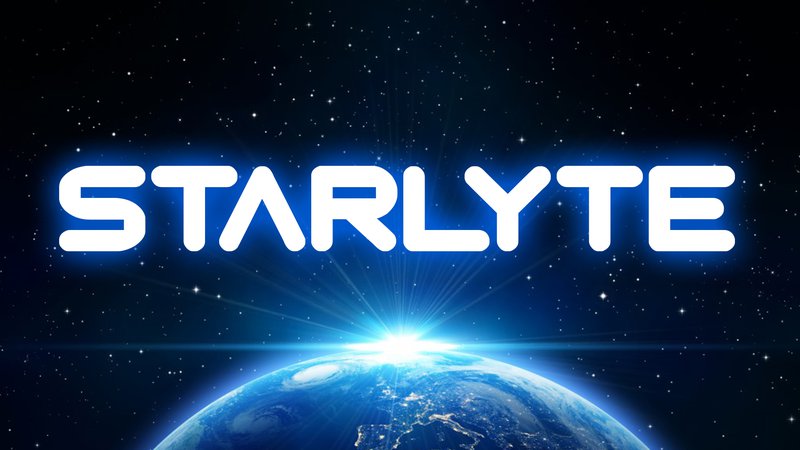STARLYTE | You are my Sunshine
Awards & Nominations
STARLYTE has received the following awards and nominations. Way to go!
The Challenge | You are my Sunshine
STARLYTE
STARLYTE is an artificial intelligence (AI) system developed to assist the HI-SEAS crew by monitoring habitat solar energy output and use. STARLYTE also helps others understand solar energy production through interactive demonstrations and simulations.

Earthhas been dependent on solar energy from the very beginning. But we, ashumans, have only begun to harness that same energysource. As our use of renewable energy gains momentum, it is also ourresponsibility to manage our energy efficiently and move towards agreener tomorrow. For our project, we focused on solar energy at theHI-SEAS habitat. The day-to-day lives of the crew at HI-SEAS rely on solar energy, and our goal is to makethat energy easier to control and use. We created STARLYTE: anartificial intelligence unit integrated with a simplified userinterface to allow for increased control of energy consumption andenergy efficiency.
Interactingwith STARLYTE is simple. Using voice commands, you can easilyobtain information from STARLYTE. STARLYTE will then respond to yourrequest with both in audio as well as visual displays.
STARLYTE utilizes real-time weather data and forecasts to predictshort-term energy production expectations and willl guide users in energy consumption and conservation.During times of expected decreases in solar energy output, STARLYTE can ensure energy efficiency is maximized by recommending changes in energy use. A map ofthe HI-SEAS habitat with a color-based data overlay displays currentenergy use and allows users to easily visualize energy consumption.If solar batteries reach critical levels, energy can be limited toessential units only with a manual override for any non-essentialunits.
STARLYTE will be continuously monitoring energy output, and can relayinformation about the state of the solar panels given expected andtrue output data. This will simplify the maintenance of the solarpanel area by alerting HI-SEAS members when the solar panels aremalfunctioning. STARLYTE MOBILE, a unit integrated into the space suit helmets canfurther simplify maintenance by quickly identifying the specificpanel that requires repair, and giving real-time feedback about theenergy output to ensure the repair is complete.
Thedeep learning aspect of STARLYTE allows the technology to adapt todifferent users and environments.
STARLYTE's simplified user interface will allow for expanded applications of ourtechnology outside the HI-SEAS habitat. Homes, schools, cruiseships, anywhere that can use solar energy can benefit from STARLYTE!
Additionaly, STARLYTE offers anincreased understanding of and control over energy consumption andcan ultimately increase our world's overall energy efficiency. Toshow real solar panel data, we created a solar panel demonstrationusing a SunnyTech solar panel and 60W lamp paired with a displaycreated in LabVIEW to show the amount of energy that can be generatedwith a solar panel and relate that to how much energy would begenerated by a solar panel array located at the HI-SEAS location. Weexpanded on this with another LabVIEW program combined with a python script that compares real-time weatherconditions between multiple locations. We compared our location (Fayetteville, NC) with the HI-SEAS location and outer space to find the amount of energy that we could obtain fromthe same solar array in all three locations.
Ouropen-source prototype of STARLYTE is fully functional and can bedownloaded on our GitHub page listed below. In the future, we wouldlike to gather user input to streamline what data is displayed, developSTARLYTE's learning capabilities to understand patterns of energyuse, and to add data sharing to compare energy use between differentlocations on earth.
Please visit our "Updates" page to see pictures of everything in action!
Our open-source code and diagrams are available here:
https://github.com/MakeItHackin/STARLYTE
Resources Used:
- Special adaptedversion of “You are my sunshine” by Ben Therrell.
Fully Functional Starlyte Artificial Intelligence Energy System:
- National SolarRadiation Database (NSRDB) – data used from April 30, 2015 forHI-SEAs location, provided by the National Renewable EnergyLaboratory
- Meteorological Datafrom the HI-SEAS Habitat
- Additional solarenergy research by PVWatts website
- LabVIEW
- Microsoft SpeechRecognition Engine
- Microsoft SpeechSynthesizer Engine
Starlyte Mobile:
- RainMeter DesktopApp
- Iron Man, Tech PC, Neon Space rainmeter skins
Solar Simulation Demo:
- 60W Swing Arm Lamp
- Realistic fine Marsregolith
- Fog machine
- 1/8” plywood, withcustom laser cutting and etching
- 20 – 5mm LEDs(pink and blue)
- Arduino Uno clone
- Relay shield
- SunnyTech SolarPanel, 5 V , 250mW
- GY-521 / MPU6050 –Six Degree of Freedom sensor (3 axis gyro, 3 axis accelerometer)
- Adafruit INA219 HighSide DC current Sensor
- Adafruit MicroUSBlipo battery charger
- Adafruit 500 mAhlipo battery
- Switches
- Wire
- 51 Ohm resistors
Weather Location Comparison Demo:
- LabVIEW
- Python
- Wunderground API
- Comparing HI-SEAS,Fayetteville and Space
Simulated Starlyte GUI for Video:
- RainMeter
- Iron Man, Tech PC, Neon Space rainmeter skins
- Projector/LED TV
SpaceApps is a NASA incubator innovation program.